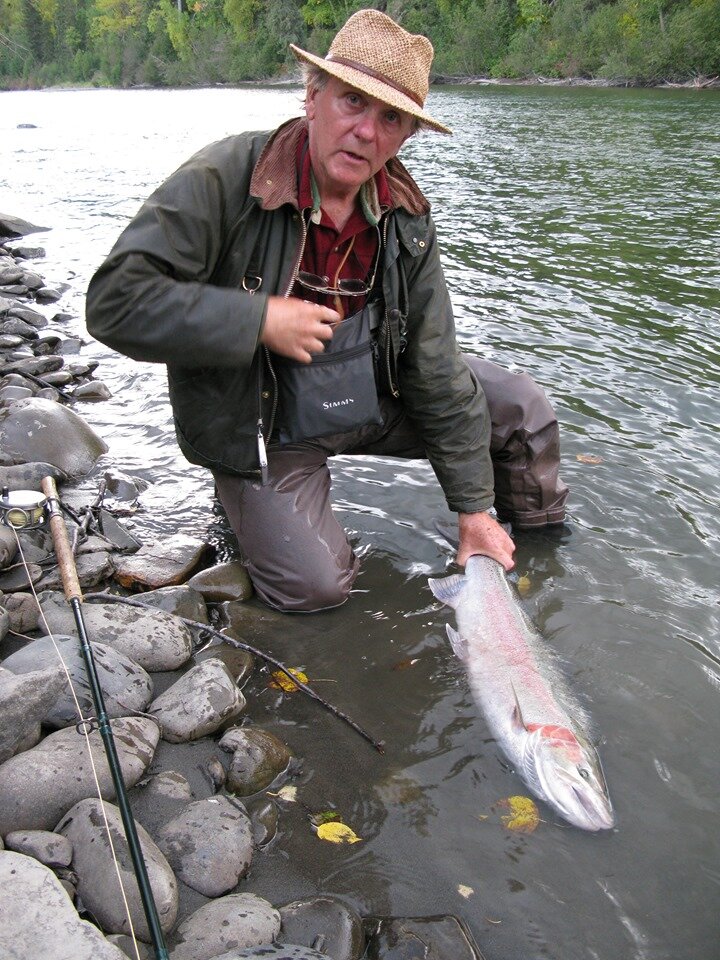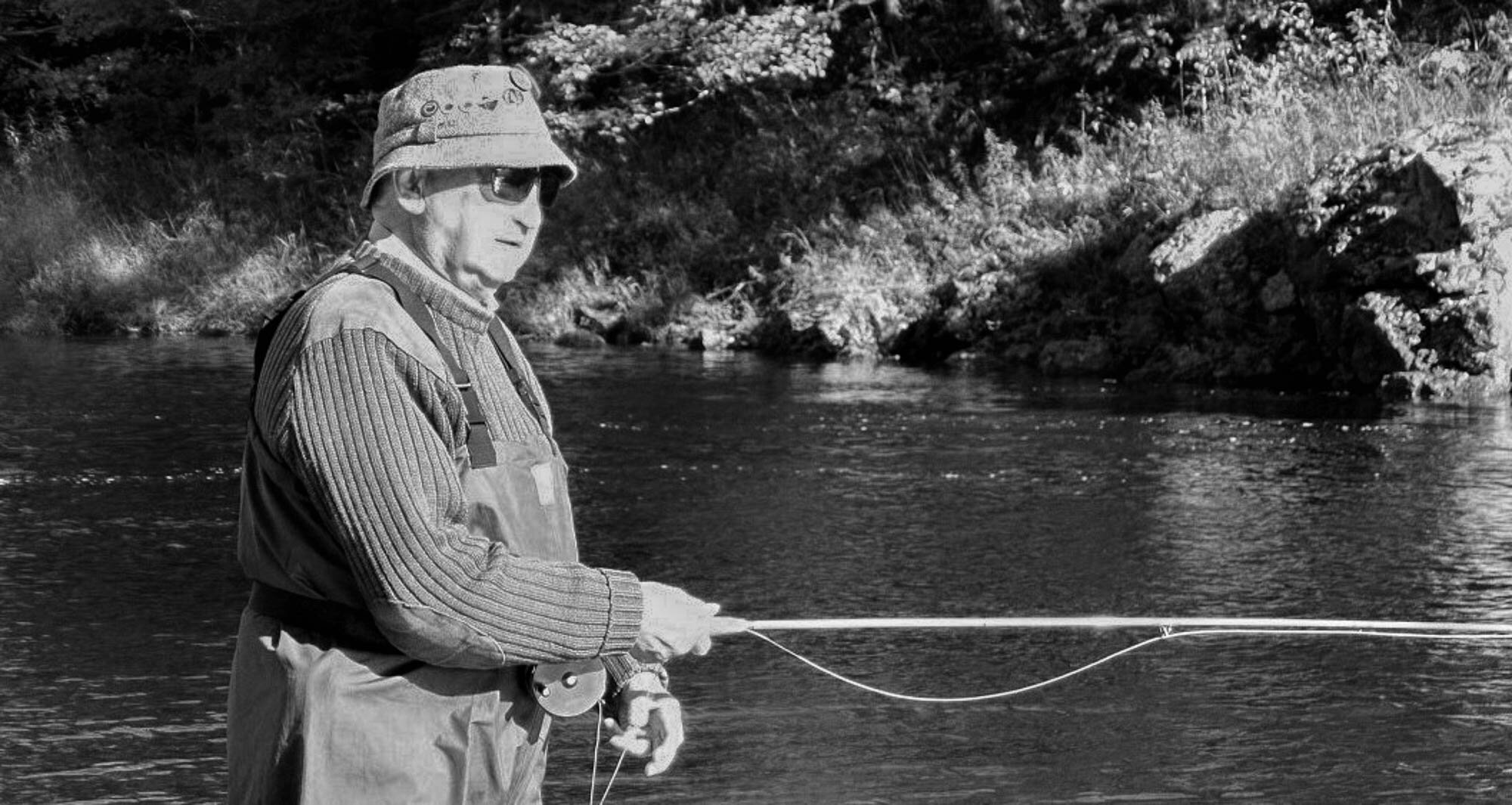You are never really alone when fishing; instead, you’re standing at the head of a long line of anglers extending hundreds of years back in time. These were the anglers who laid the foundations of the sport you now enjoy, the men and women who made the tackle, fashioned the fly patterns and developed the techniques we now use to catch trout, steelhead, salmon and a myriad of saltwater species. They were the founders of our sport, and each time we go fishing we profit from their history and their work.
The Pacific Northwest has an especially rich fly-fishing history, much of it centered in the geographic triangle formed by the Sauk, Skagit, and Stillaguamish rivers, hosts to some of this country’s angling greats. Perhaps the most historic place of all within that triangle is the confluence of Deer Creek with the North Fork of the Stillaguamish River, the world’s first fly-fishing-only steelhead river. Deer Creek was where renowned pulp fiction writer Zane Grey and immortal angling author Roderick Haig-Brown made their first casts for steelhead, and the North Fork below Deer Creek became the home water of such fly-fishing luminaries as Walt Johnson, Frank Headrick, Ralph Wahl, Wes Drain, Al Knudson, George Keough, three generations of the McLeod fishing family, and others who had fishing camps on the river. The descendants of some still do.
Zane Grey wrote about Deer Creek:
“How often I find myself realizing more and more that though to catch fish is the motive of angling, it is not the all! The unattainable is not the fish. It is that beauty and spirit and life . . . .”
Those beautiful words enticed generations of anglers to pursue steelhead in the bright waters of Puget Sound’s northern rivers and set the table for inspiring prose from other angling authors—Enos Bradner, Steve Raymond and Dick Van de Mark, to name a few.
This landscape’s storied angling past makes it the ideal location for the Pacific Northwest Museum of Fly Fishing, dedicated to preserving, exhibiting and interpreting the artifacts, art, literature, history, and conservation ideals of the Northwest fly fishers who preceded us. The museum also will host the only casting ponds north of San Francisco designed and approved by the American Casting Association.
The planned site of the museum is a Snohomish County park bordered on one side by State Highway 530 and on the other by the Centennial Trail, winding from Arlington through the beautiful Stillaguamish Valley to Darrington, open only to travelers on foot, horse or bicycle. The museum also will serve as a community meeting point and indoor/outdoor classroom, teaching the next generation the tenets of conservation.
The Pacific Northwest Museum of Fly Fishing will become the only fly-fishing museum in the western United States, but its emphasis always will be on the Pacific Northwest--British Columbia,Washington, Oregon, and Idaho. For anglers traveling to fish the North Fork of the Stillaguamish, the Sauk, the Skagit, or other fishing destinations, it will become a stopping point to examine some of the tackle, flies, books, art, and other paraphernalia of the pioneers who helped to pave our way, who now join us as silent companions on the stream.
We hope you will join us by donating whatever you can to help make this possible. The Pacific Northwest Museum of Fly Fishing is a nonprofit 501c3 corporation.
Make a donation today
Donate by Check or Online:
Make checks payable to: Pacific Northwest Museum of Fly Fishing or “PNWMFF”
Mailing Address:
PO Box 464
Arlington, WA 98223
Testimonials
“The fly-fishing history of the Pacific Northwest may not extend as far back in time as that of other places, but it is unusually varied, unusually interesting and in many ways unique. This is so because the shape of the country, the nature of its waters, and the variety and habits of its native fish caused Northwest fly fishing to evolve differently from anyplace else. Many artifacts of that evolution are still with us, but many others have disappeared with the passage of time. Now we have the opportunity to preserve what remains in the Pacific Northwest Museum of Fly Fishing, a long-held dream of many Northwest anglers. That’s why I support and will contribute to the museum project—and why you should, too.”
--Steve Raymond
Raymond is former vice president of the American Museum of Fly Fishing, author of The Year of the Angler, The Year of the Trout, Steelhead Country, Rivers of the Heart and other fly-fishing books, former editor of The Flyfisher and Fly Fishing in Salt Waters magazines.
“The Pacific Northwest has a rich fly-fishing history. Colonial administrators introduced fly fishing to the area when Vancouver Island and British Columbia were still British colonies. They became one colony in 1858 and in 1871 B.C. joined Canada. Many Brits seeking adventure and sport visited the province and wrote passages in their books describing the wonderful fly fishing. Others emigrated and added to the growing bounty of the sport’s history. Pioneer figures like T. W. Lambert, A. Bryan Williams, Bill Nation, General Noel Money, Roderick Haig-Brown and Tommy Brayshaw became legendary for their books, fly patterns and the advances they made in fly-fishing knowledge and techniques, and they are only a few of many who have enhanced the sport. Bits and pieces of their tackle, flies, manuscripts and artwork are still around and it would be great if some of these artifacts could be preserved in a museum for new generations of fly fishers to view and admire. That’s why we need a Pacific Northwest Museum of Fly Fishing.”
--Art Lingren
Vancouver, B.C.
“I fully support and would help promote the establishment of the Pacific Northwest Museum of Fly Fishing.. Fly fishing to me has been an art and sport for 78 years. The historical facts of "by who, when, and where" should always be preserved and exhibited. This would be a great tribute to the sport’s history.
My own experiences have been rewarding. I was able to place some of Bill Nation's items in the Kamloops Museum and worked with them to establish their fly-fishing area. The complete Nation collection was in Bellingham at the "Come Wade the River" exhibit in 1996-97. I work closely with the Margaree Salmon Museum in Nova Scotia, acquiring many items of history. I was able to acquire the Harry Lemire collection of Atlantic Salmon flies for that museum and my wife and I provided the showcase to display the collection. I hope to see a similar museum in the Pacific Northwest.”
--Bill Jollymore




